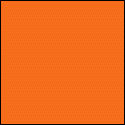Calligraphy, often referred to as the art of writing, is a type of visual art that produces elegant handwriting. The word calligraphy is derived from the Greek words 'kallos' (which means "beauty") and 'graphe' (which means "writing").
According to experts, calligraphy is a combination of an art form and a craft. In its simplest form, calligraphy involves writing letters in an artistic manner using a few or several direct strokes. A person practising the art of calligraphy is called a calligrapher. Such a person's objective is to express emotion and beauty in writing.
The ancient origins of calligraphy take us back to the cavemen days where the experiences in a caveman's life were drawn on the walls of caves. With the development of humans, such drawings also became more advanced and around 3500 BC the Egyptians created hieroglyphics - symbols that were based on humans/gods, animals and implements. Around 1000 BC, one of the first alphabets and writing systems were introduced by the Phoenicians, who spread this knowledge to every seaport they passed on their travels around the world. It is believed that the Greeks, who developed a writing form of their own, were influenced by the Phoenicians.
In ancient times, before man invented the printing press, calligraphy was used to produce books. Every copy of a book was carefully handwritten by a scribe using a quill and ink. With the invention of the printing press, faster printing of books was possible. However, handwriting skills continued to be in high demand as the printing press was not practical for daily correspondence such as letters and invitations.
There are three main styles of calligraphy widely found in the world today. They are - Western (also called Roman), Arabic and Oriental (also called Chinese). Over the centuries, calligraphy has withstood the challenges of a variety of man's inventions such as the printing press, steel and fountain pens, and more recently, the computer. Calligraphy continues to grow in calligraphic societies in the United States and Europe. Calligraphy is also a highly respected art form in both the Chinese and the Arabs cultures.
In modern times, calligraphy has a variety of practical use in day-to-day life. It is widely used in various occasions such as invitations for wedding and other events, greeting cards, font designing, logo designing, graphic designing, memorial documents, legal documents, business cards, maps, menus, cut stone inscriptions and even documentation such as birth or death certificates.
Learn Calligraphy
Calligraphy has always held a reputation for being a fine art. There comes a time in every individual’s life when they become interested in learning calligraphy. Therefore, we shall explore what it takes to learn calligraphy and how to get about it.
 If you want to learn calligraphy in step by step detail, the best book to lay your hands on will be ‘calligraphy for dummies’. The book explains every step of the way in the deal in detail to make it easier on any reader to follow instructions. Those who are very serious about pursuing calligraphy professionally believe that they need to enroll in formal courses to learn calligraphy. But others who engage in calligraphy just for the fun of it, almost always learn calligraphy by themselves or through friends. However, some people have an inborn talent at it.
If you want to learn calligraphy in step by step detail, the best book to lay your hands on will be ‘calligraphy for dummies’. The book explains every step of the way in the deal in detail to make it easier on any reader to follow instructions. Those who are very serious about pursuing calligraphy professionally believe that they need to enroll in formal courses to learn calligraphy. But others who engage in calligraphy just for the fun of it, almost always learn calligraphy by themselves or through friends. However, some people have an inborn talent at it.Among the many varieties of calligraphy are the popular ones such as Chinese calligraphy, Italian calligraphy and so on. If you want to master in learning a particular style, you will need some dedication and a lot of practice. After all, calligraphy is simply an art – an art where beautiful writing styles are used for various reasons.
Anyone who’s interested to learn calligraphy should get hold of professional calligraphy pens. The ink being used also makes a huge difference in the quality of the output. If you are a beginning trying to learn calligraphy, a chisel point pen of about one and half millimeters of width would be the best.
A steady hand is a must have when you learn calligraphy. Therefore, before you sit down to it, take a moment to relax and calm yourself. Focus is another important component in both learning and practicing calligraphy. If you are a complete beginning trying to learn calligraphy, it is a good idea to equip yourself with a calligraphy alphabet such as the uncial alphabet.
If you are good at drawing what you see, you may attempt to learn calligraphy just by looking at an alphabet. If you feel more comfortable in tracing an alphabet, in order to get the hang of strokes and curves, it is a good idea to start off by tracing. You may need some tracing paper at this point. A common temptation for many beginners when they learn calligraphy for the first time is to get in to fancy maneuvers immediately. No matter how tempting it is, you should not get in to it until you are comfortable with the basic layout. So first try to learn calligraphy in its most basic way before adding glitter to your writing!









